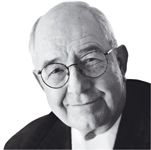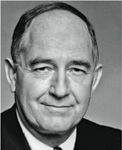Article
Dr. J. Donald Gass: 'father of macular disease' remembered
In more than 280 scientific articles and his textbook—nicknamed the "Gass Atlas"—Dr. Gass explained such phenomena as the pathogenesis of disciform macular degeneration.

Long before pancreatic cancer claimed his life Feb. 26 at age 76, Dr. Gass was praised for his many contributions to the practice of ophthalmology.
Yet, while Dr. Gass was recognized by his peers as one of the most important ophthalmologists of the 20th century-in part for his seminal textbook, "Stereoscopic Atlas of Macular Diseases: Diagnosis and Treatment," a standard reference for fellow specialists-he remained a humble man who declined to name after himself the many syndromes he identified. Only one-Irvine-Gass Syndrome-bears his name, and then only in the secondary position.
In addition, he had received such honors as the Distinguished Faculty Scholar Award at the University of Miami in 1989, the Mildred Weisenfeld Award for Excellence in Ophthalmology in 1999 from the Association for Research in Vision and Ophthalmology, the Helen Keller Prize for Vision Research in 2001, and the Laureate Recognition Award of the American Academy of Ophthalmology in 2004.

An outstanding vision "He was identified as one of the outstanding ophthalmologists of the 20th century, and I think that was perhaps an understatement, maybe the 21st century as well," added Michael T. Trese, MD, chief of pediatric and adult vitreoretinal surgery at Beaumont Hospital in Royal Oak, MI, and incoming president of the Retina Society. "There is just an absolutely extraordinary amount that Don contributed to everyone's knowledge of the retina."
Born on Prince Edward Island, Canada, in 1928, Dr. Gass received his bachelor's degree from Vanderbilt University, Nashville, TN, in 1953 before joining the U.S. Navy as a line officer during the Korean War. In 1957, he graduated at the top of his class at Vanderbilt Medical School and completed an internship at the University of Iowa, Iowa City, before pursuing ophthalmology at the Wilmer Eye Institute at Johns Hopkins University School of Medicine.
Several of his colleagues, though, point to his 1-year tenure with the Armed Forces Institute of Pathology studying ocular pathology as a pivotal juncture in his career. There, he learned to examine the pathology behind various eye diseases, which led to myriad observations that increased the understanding of eye function.
In 1963, he served as chief resident at the Wilmer Eye Institute to complete his training. Rather than enter private practice, Dr. Gass opted to join Edward W.D. Norton, MD, at the newly founded Bascom Palmer Eye Institute in Miami, where he spent 32 years.

Newsletter
Don’t miss out—get Ophthalmology Times updates on the latest clinical advancements and expert interviews, straight to your inbox.




